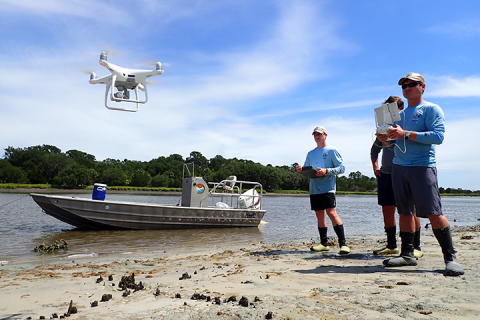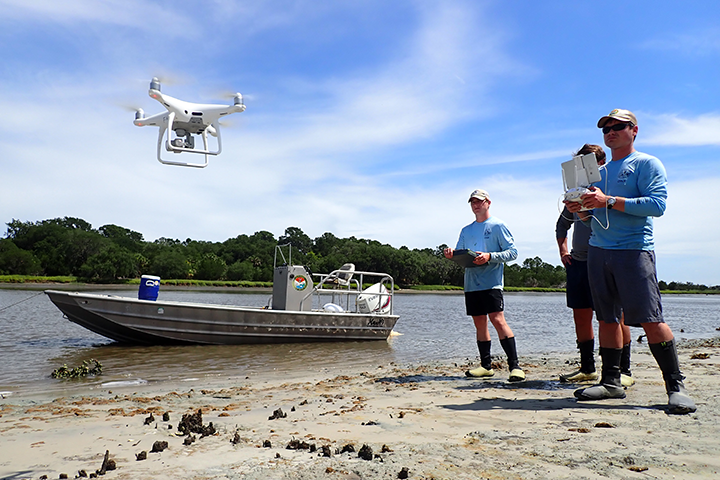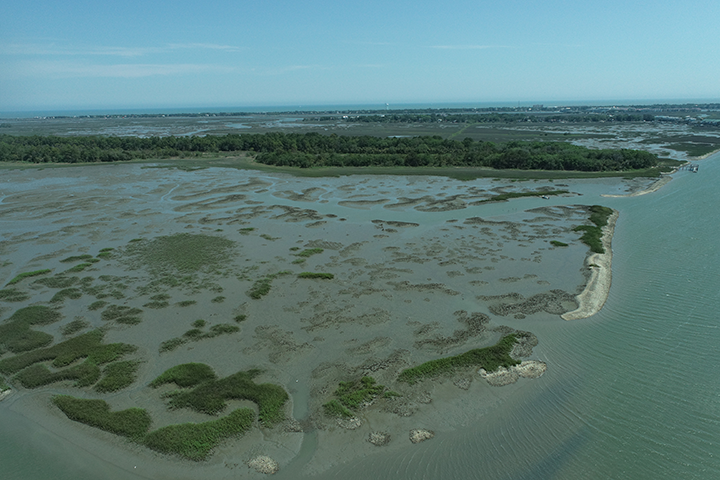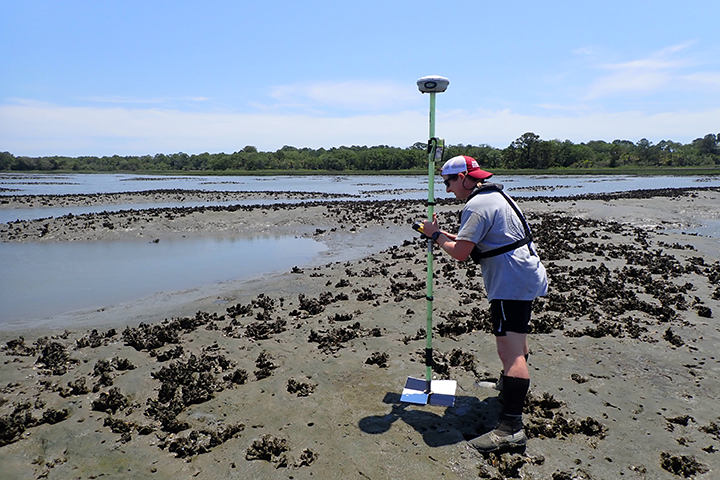
This project assembles oyster reef managers along the southeastern United States and evaluates Uncrewed Aircraft Systems as a standardized tool to measure and manage oyster reefs.
Overharvesting oyster reefs threatens their sustainability, reducing the amount of shells available as substrate for oysters and other reef-dwelling organisms and diminishing resilience to additional stressors. To protect and enhance oyster reefs, resource managers in the southeast must decide when and where to enact fishery closures or plant substrate, typically relying on conventional monitoring approaches for reef distribution and demographics. These approaches, often boat-based surveys or in situ quadrat sampling, are time consuming and are limited by spatial scale. Managers have expressed a need for rapid, standardized, and quantitative measures to assess reef condition to direct management and restoration actions. Reserve staff from multiple southeastern NERRs are also interested in monitoring changes in oyster reefs over time within reserves, expanding on oyster monitoring that currently ranges from non-existent to a combination of mapping and in situ monitoring.
Building on a 2020 Catalyst Grant, this project will evaluate Uncrewed Aircraft Systems (UAS) as a tool for providing quantitative measures of intertidal Eastern oyster (Crassostrea virginica) reef structural and demographic metrics and changes to reefs in response to natural and anthropogenic factors. The project team will implement an integrated and collaborative process with intended users in the southeastern U.S. to generate UAS workflows for quantifying oyster reef structural and demographic characteristics. By working closely with intended users to develop data products and analyses, the project will support improved interstate collaboration for oyster management and enhanced technical capacity to conduct UAS-based oyster reef assessments.
Project team member Gary Sundin gives a short introduction to "Collaborative Development Of Novel Remote Sensing Workflows For Assessing Oyster Reef Structural And Demographic Characteristics To Inform Management And Restoration," a collaborative research project funded in 2022 by the NERRS Science Collaborative.


